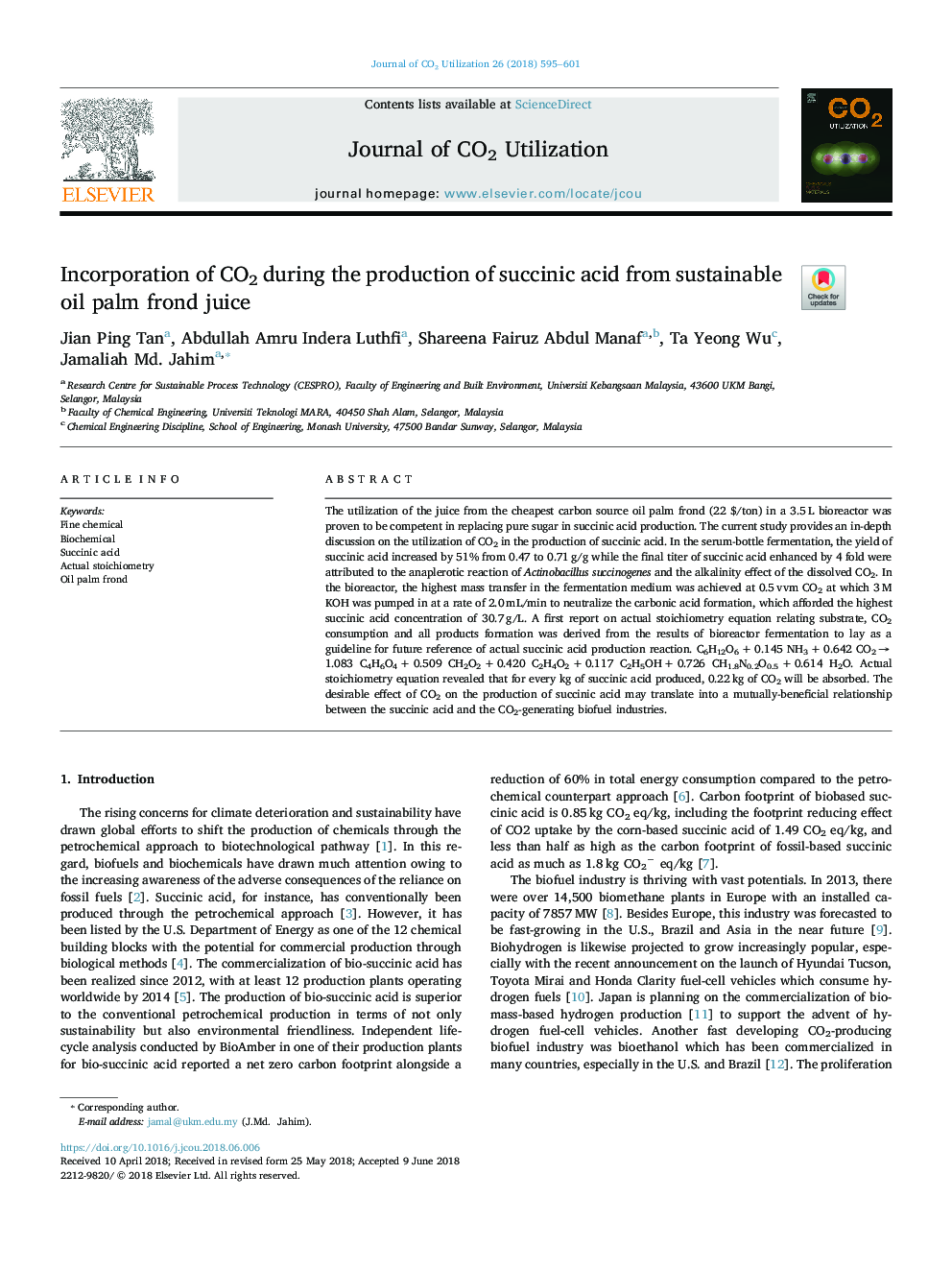| Article ID | Journal | Published Year | Pages | File Type |
|---|---|---|---|---|
| 6528553 | Journal of CO2 Utilization | 2018 | 7 Pages |
Abstract
The utilization of the juice from the cheapest carbon source oil palm frond (22 $/ton) in a 3.5â¯L bioreactor was proven to be competent in replacing pure sugar in succinic acid production. The current study provides an in-depth discussion on the utilization of CO2 in the production of succinic acid. In the serum-bottle fermentation, the yield of succinic acid increased by 51% from 0.47 to 0.71â¯g/g while the final titer of succinic acid enhanced by 4 fold were attributed to the anaplerotic reaction of Actinobacillus succinogenes and the alkalinity effect of the dissolved CO2. In the bioreactor, the highest mass transfer in the fermentation medium was achieved at 0.5â¯vvm CO2 at which 3â¯M KOH was pumped in at a rate of 2.0â¯mL/min to neutralize the carbonic acid formation, which afforded the highest succinic acid concentration of 30.7â¯g/L. A first report on actual stoichiometry equation relating substrate, CO2 consumption and all products formation was derived from the results of bioreactor fermentation to lay as a guideline for future reference of actual succinic acid production reaction. C6H12O6â¯+â¯0.145 NH3â¯+â¯0.642 CO2â¯ââ¯1.083 C4H6O4â¯+â¯0.509 CH2O2â¯+â¯0.420 C2H4O2â¯+â¯0.117 C2H5OHâ¯+â¯0.726 CH1.8N0.2O0.5â¯+â¯0.614 H2O. Actual stoichiometry equation revealed that for every kg of succinic acid produced, 0.22â¯kg of CO2 will be absorbed. The desirable effect of CO2 on the production of succinic acid may translate into a mutually-beneficial relationship between the succinic acid and the CO2-generating biofuel industries.
Related Topics
Physical Sciences and Engineering
Chemical Engineering
Catalysis
Authors
Jian Ping Tan, Abdullah Amru Indera Luthfi, Shareena Fairuz Abdul Manaf, Ta Yeong Wu, Jamaliah Md. Jahim,
